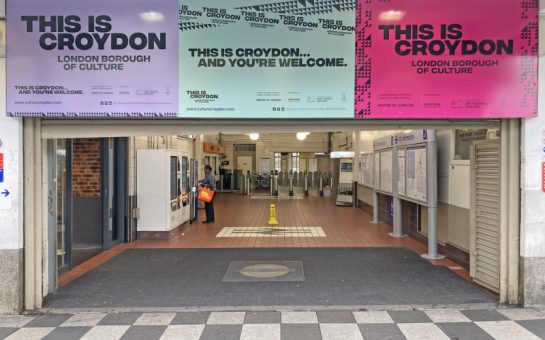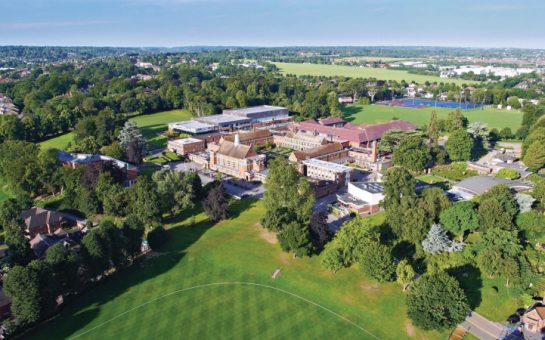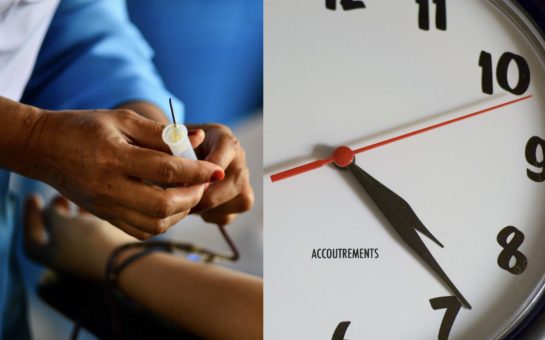Business leaders are confident Croydon can thrive after the borough was shortlisted to become one of the UK’s first ever Creative Enterprise Zones last month.
Each borough has received a grant of £50,000 to help develop their Creative Enterprise zone plans over the next few months.
Chief executive of Croydon Business Improvement District (BID), Matthew Sims, believes support is growing throughout the Croydon community for their Borough to succeed culturally.
He said: “We have a huge range of different talents from dance, music and art, all of which comes together to create the most wonderful stories and to paint the story of what we are all about.”
Mr Sims also believes what distinctively sets Croydon apart from the other London Boroughs is the people.
He added: “There is a very loyal community which works well with one another. People are starting to realise we have it in our grasp and we have very skilled people living here who are working closely with businesses who want to achieve this.”
Mr Sims also felt it was important for Croydon to achieve the Zone in order to reinforce the growth and evolution the Borough is experiencing.
The other boroughs shortlisted by London Mayor Sadiq Khan are Barking and Dagenham, Bexley, Camden, Harrow, Hounslow, Lambeth, Lewisham, Southwark and a joint bid from Tower Hamlets and Hackney.
Long-term developers within Croydon’s Creative Zone such as Kingston University, Croydon Arts Studio and Talawa Theatre in particular, will greatly benefit from the funds.
Executive director of the Talawa Theatre Company, Natasha Bucknor, also agrees that Croydon will greatly benefit in becoming one of London’s first CEZ.
She said: “It will be very important for Croydon to be awarded the CEZ; Croydon is attracting a cluster of arts organisations and innovative new businesses.
“Getting the CEZ will inevitably attract more investment to the area, but more importantly offer some protection to the artists, organisations, communities and businesses that are already there.”
Ms Bucknor praised Croydon Council for successfully bringing together cultural organisations and stakeholders together to back the campaign.
She believes Croydon has the unique qualities that stand out against the other London boroughs as the most suitable place for a CEZ.
She said: “Croydon is different to other boroughs. It has a different energy, largely because of its diverse population. We’ve found it to be open and welcome to newcomers and new ideas. Croydon should win because of its potential for growth, and its focus on its many communities.”
In order to qualify as a potential Creative Enterprise Zone, each borough must focus on four key areas; Space, Skill and Support, Policy and Community.
Each zone will also have to reflect their boroughs distinctive character whilst convincing people why their area will be the best hub for creative industries.
The manifesto published by Croydon Central Creatives confirms the Creative Enterprise Zone will be located by East Croydon Station, Croydon’s Cultural Quarter and Grafton Quarter.
Ms Wilson added: “The creative industries contribute £47bn to London’s economy every year and account for one in six jobs in the capital. Creative jobs are growing four times faster than the economy average and the majority of jobs cannot be automated, providing a major employment opportunity for London.”
According Haringey Council, who acted as creative pathfinder to the Tottenham’s zone last year, having more zone’s will see dramatic improvements for communities and businesses.
Tottenham’s Creative Enterprise Zone project has proven to be a big success, with creative industries grow by 127 per cent in the past five years.
It is estimated around 300 new jobs will be available each year and generate a growth of £26million to the chosen boroughs.
This progress of selecting the best boroughs marks a significant moment in achieving key outcomes in the Mr Khan’s manifesto by establishing more creative areas.
Mr Khan said: “Artists and creative businesses around London breathe life into every corner of our city – but too often they find themselves unable to put down roots due to the spiralling cost of housing and workspace. This is a real problem that threatens to undermine London’s position as the world’s creative capital.”
The project aims to combat increasing rents on creative communities, with London predicted to lose 30 per cent of affordable creative workspace by 2019.
Mr Khan believes these zones will offer affordable spaces for young people to set up creative businesses, showcase their work and thrive within the capital.
The three winning London boroughs will be elected as the first official Creative Enterprise Zone’s will be announced later this year.




